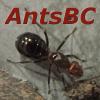
Edited by Quizzie, July 3 2019 - 10:24 AM.


Best Answer AntsBC , July 3 2019 - 10:43 AM
Yep, Formica rufibarbis; due to the amount of standing setae present on the gaster.
These guys are often misidentified by hobbyists who mistake them for the less hairy Formica clara.
Go to the full post

Edited by Quizzie, July 3 2019 - 10:24 AM.
Formica cinerea (queen of 2018)
Formica rufibarbis (queen of 2019)
Formica pratensis? (queen of 2020)
Hi there! I went on a 6 month or so hiatus, in part due, and in part cause of the death of my colonies.
However, I went back to the Sierras, and restarted my collection, which is now as follows:
Aphaenogaster uinta, Camponotus vicinus, Camponotus modoc, Formica cf. aserva, Formica cf. micropthalma, Formica cf. manni, Formica subpolita, Formica cf. subaenescens, Lasius americanus, Manica invidia, Pogonomyrmex salinus, Pogonomyrmex sp. 1, Solenopsis validiuscula, & Solenopsis sp. 3 (new Sierra variant).
Yep, Formica rufibarbis; due to the amount of standing setae present on the gaster.
These guys are often misidentified by hobbyists who mistake them for the less hairy Formica clara.
Edited by AntsBC, July 3 2019 - 10:47 AM.
Awesome, thanks!
Formica cinerea (queen of 2018)
Formica rufibarbis (queen of 2019)
Formica pratensis? (queen of 2020)
My Main Journal | My Neivamyrmex Journal | My Ant Adoption | My YouTube
Join the TennesseeAnts Discord Server! https://discord.gg/JbKwPgs
0 members, 1 guests, 0 anonymous users